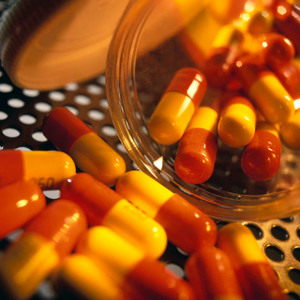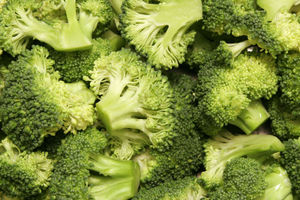Antioxidants May Raise Cancer Risk?

Regular readers will know that I have for some years now been raising a red flag the wholesale promotion of antioxidants.
The trouble is this: antioxidants are supposed to help rid us of some of the free radicals that have been implicated in a small number of diseases, and may also play a role in some of the physical aspects of aging. However, free radicals are also some of the major cancer killers in the body, so eradicating them – even if it were possible – hardly seems like a good idea.
According to an analysis of a dozen studies including more than 100,000 patients in the Mayo Clinic Proceedings taking antioxidant supplements do not reduce cancer risk.
In fact smokers who take beta carotene supplements could be increasing their risk of smoking-related cancer and death.
Different antioxidants have different effects, and their effects may also vary depending on the part of the body involved.
The researchers looked at 12 trials that compared antioxidant supplements with placebo on cancer incidence and mortality. Antioxidant supplements did not reduce the risk of cancer. When they looked separately at beta carotene, they found the nutrient actually increased cancer risk by 10 percent among smokers. There was also a trend toward a greater risk of dying from cancer with beta carotene supplementation.
Selenium supplements reduced cancer risk by 23 percent among men, the researchers found, but had no effect on women. While vitamin E had no anti-cancer effect overall, supplementation with the nutrient was tied to a 13 percent lower prostate cancer risk.
A large study looking at vitamin E supplementation for prostate cancer is currently underway. While future studies of beta carotene and vitamin E for cancer prevention are very unlikely to show effectiveness, it would be worth doing further studies on selenium.
The moral of the story: we should be going for a balanced diet and a balanced life in general rather than putting our hopes in an over-simplified nutritional message.
Judah Folkman R.I.P.

I just heard that Judah Folkman just passed away at the age of 74. That is a name that is not widely known outside the scientific world, although a couple of years ago an excellent book –Dr. Folkman’s War – was written about him and his work.
His major work and his enduring legacy was in the field of angiogenesis: the production of new blood vessels. In the 1960s he came up with the idea that a way to kill tumors was to starve them of the blood supply that they need to survive. He was initially ridiculed, but history is now proving him correct. I got to know him twenty years ago after publishing a paper in which I described the discovery of a growth factor that is involved in the production of new blood vessels at the back of the eye in people with diabetes. Judah was very supportive and we had many good discussions about the potential role of angiogenesis not only in tumors and diabetic retinopathy, but also in diseases like rheumatoid arthritis and psoriasis.
Last November, at the 12th Annual Society for Neuro-Oncology Meeting in Dallas, researchers from the University of Virginia and several other leading brain tumor centers in the United States presented data on the successful use of an inhibitor of angiogenesis in the treatment of glioblastoma multiforme (GBM), the most common form of primary brain cancer. It is hard to treat, and if it recurred after surgery, radiation and/or chemotherapy there was often not much to be done.
Building on Judah’s work, they wanted to see if they could inhibit vascular endothelial growth factor (VEGF) that has an important role in the disease. VEGF fosters the growth of a tumor by
stimulating the growth of new blood vessels to feed it. According to earlier studies, bevacizumab (BV) (Avastatin), a humanized monoclonal antibody that specifically targets VEGF, in combination with irinotecan (also called CPT-11) could have a role in recurrent glioblastoma multiforme. The researcher was an attempt to establish the clinical benefit of BV, both alone and in combination with CPT-11, in a multicenter, randomized phase II trial.
The results were very promising, substantially exceeded the pre-specified thresholds set for this work.
They looked at 6-month progression-free survival (PFS) defined as no clinical or MRI tumor growth and the objective response rate (ORR), which measures tumor shrinkage. Secondary endpoints included safety and survival. Response assessments were conducted by an independent radiographic facility that did not know which patients had been treated. All patients were followed for 24 weeks to determine efficacy and safety.
When taking BV, 35.6 percent of patients on average had a 6-month survival with no progression of their cancer, and an objective response rate of 21.2 percent on average.
The combination of BV and CPT was even more effective, with results of 51 percent and 34.1 percent, respectively.
The investigator group found similar results when they evaluated the patients. Those results showed that 44.7 percent of patients on average had a 6-month survival with no progression of their cancer, and an objective response rate of 38.8 percent on average. The combination therapy yielded results of 60.9 percent and 46.3 percent, respectively.
The surviving patients have remained in the study and are still being treated and followed, so we shall be seeing some longer-term results in the future.
In the United States bevacizumab has already been approved for the treatment of metastatic colon cancer and most forms of metastatic non-small cell lung cancer.
This is very encouraging research and a fitting tribute to a genuine medical pioneer.
Unhealthy America

The Milken Institute has released an impressive study that shows the heavy economic burden chronic disease places on our nation. “An Unhealthy America: The Economic Burden of Chronic Disease” shows the current treatment costs of seven chronic diseases – cancers, diabetes, heart disease, hypertension, stroke, mental disorders and pulmonary conditions – as well as the economic impacts of lost workdays and lower employee productivity. It gives a breakdown across all 50 states and the nation as a whole. The study finds that the annual economic impact on the U.S. economy of the most common chronic diseases is more than $1 trillion, and projects that the figures could reach nearly $6 trillion by the middle of the century.
Though some of the blame for this burden can be blamed on stress and environmental factors, much more of it is a direct consequence of our lifestyle choices interacting with our genes. Most of us are failing to renew, refresh and replenish ourselves, and it is important to recognize that whenever we start debating the costs of health care in the United States.
Integrated Health is based on tailored systems to help people care for themselves by going way beyond diet and exercise, and addressing the psychological, social, cultural, subtle and spiritual components of health and wellness. Healing, Meaning and Purpose is a detailed roadmap for creating the life that you deserve, and we are going to be rolling out a new series of teleseminars and workshops in the New Year.
Fat and Cancer

It is not every day that a medical story hits the front page of USA Today, but today one has, and for a very good reason.
The World Cancer Research Fund (WCRF) has just published a report that we have been eagerly awaiting for several years. It is the most comprehensive analysis ever published on the link between cancer and diet, weight and physical activity. Researches at nine academic institutions across the world looked for every relevant study published since records began in the 1960s. They initially found half a million, and in the end 7,000 of them were judged to be the most relevant and robust for inclusion in the report.
It includes 10 recommendations from a panel of 21 world-renowned scientists that represent the most definitive and authoritative advice that has ever been available on how the general public can prevent cancer. UNICEF and the World Health Organization were among the official observers of the report’s process.
A key finding is that maintaining a healthy weight (a BMI of 20-25) is one of the most important things you can do to prevent cancer. The number of types of cancer where there is “convincing” evidence that body fat is a cause has risen from one to six since the last WCRF report was published in 1997, including colorectal cancer and post-menopausal breast cancer.
Prof Sir Michael Marmot, who was Chair of the Panel, said that,
“We are recommending that people aim to be as lean as possible within the healthy range, and that they avoid weight gain throughout adulthood.
“This might sound difficult, but this is what the science is telling us more clearly than ever before. The fact is that putting on weight can increase your cancer risk, even if you are still within the healthy range.
“So the best advice for cancer prevention is to avoid weight gain, and if you are already overweight then you should aim to lose weight.”
Other findings in the report include:
There is “convincing” evidence that processed meats, including ham and bacon, increase the risk of colorectal cancer. People who consume them are advised to do so sparingly.
The evidence that red meat is a cause of colorectal cancer is stronger than ever before. People should not eat any more than 18 ounces (500g) of red meat a week.
This figure is for cooked meat, and is the equivalent of between 15-30 ounces (700-750g) of non-cooked meat.
Here is something that is almost a first, at least for a cancer report. It has made a breastfeeding recommendation: mothers are advised to breastfeed exclusively for six months and to continue with complementary breastfeeding after that. This is because of “convincing” evidence that breastfeeding protects the mother against breast cancer and “probable” evidence that it protects the child against obesity later in life.
Dietary supplements are not recommended for cancer prevention. The evidence that alcohol is a cause of cancer is stronger now than ever before.
Professor Martin Wiseman, Project Director of the Report, said:
“This report is a real milestone in the fight against cancer, because its recommendations represent the most definitive advice on preventing cancer that has ever been available anywhere in the world.
“When individual studies are published, it is impossible for the public to put them into context and know how seriously they should be taking the findings. But the great thing about this report is that it does this job for them.
“If people follow our recommendations, they can be confident they are following the best advice possible based on all the scientific research done up to this point. These recommendations are not based on one study but are based on 7,000.”
In the United Kingdom, plans are afoot to establish a Cancer Reform Strategy. Professor Mike Richards, the British Government’s Clinical Director for Cancer, had this to say:
“The WCRF report is the most authoritative and exhaustive review done thus far on the prevention of cancer through food, nutrition and physical activity.
“For those of us wanting to lower our risk of developing cancer, the Report provides practical lifestyle recommendations. The Report also provides public health goals. Both will form an important element for the forthcoming Cancer Reform Strategy.”
These are the main recommendations:
- Limit red meat
- Limit alcohol
- Avoid bacon, ham, and other processed meats
- No sugary drinks
- No weight gain after 21
- Exercise every day
- Breastfeed children
Have you seen those infomercials where someone tells you that there is some conspiracy by shadowy people who don’t want you to know the truth about diet, exercise and cancer? Next time remember this research. If some expensive supplement or the juice of an exotic berry from the Himalayas could really reduce the risk of cancer, these studies should have noticed something by now.
Broccoli and Skin Cancer

This one is going to launch a thousand gags on the late night talk shows, but it is actually quite serious.
Despite what you hear on some of those infomercials, there is a strong link between ultraviolet radiation (UVR) and many kinds of skin cancer. You can even use ultraviolet radiation to induce cancerous change in cells cultures in a Petri dish.
In an article from Johns Hopkins University published in the Proceedings of the National Academy of Sciences damaging effects of UVR can be significantly reduced by the topical application of a broccoli extract called sulforaphane that comes from broccoli sprouts. Sulforaphane was first identified over 15 years ago, and it has been shown to play a role in preventing the development of several types of tumors that can be induced by cancer-causing chemicals. It may also have a role
in fighting some established tumors.

The research involved both animal and human studies, and showed that the level of erythema (skin reddening) caused by UVR is substantially reduced when this extract is applied to the skin.
The broccoli extract is not acting like a sunscreen; it does not absorb the UVR, neither does it stop it from entering the skin. Instead it enters the cells and switches on the production of several enzymes that protect cells from UV damage. The result is that the protective effect is sustained for days after the extract has been removed.
The advantage of this is that it is much longer-lasting than any sunscreen – several days, in fact. The scientists said the protection is still there when no extract is present on/in the skin.
The researchers first tested sulforaphane on mouse models of skin cancer, and then on six healthy human volunteers.
Each of the volunteers had small patch of skin exposed to a pulse of UVR. Some of the patches were treated with the broccoli extract while others were not.
At the highest UVR dosages, UVR-induced redness and inflammation was on average 37% lower when the extract had been applied, and the protection was sustained for at least three days. They also found that protection varied greatly depending on the person – protection ranged from 8% to 78%.
These variation may be due to the volunteers’ different skin types, dietary habits and genetic differences.
In these trials, the conventional sunscreens did not provide significant protection.
This research is important for several reasons:
- The research re-emphasizes the importance of recognizing inter-individual differences. An approach that works for one person may not help another
- There are many times in life when we cannot do much to prevent something bad happening to us: radiation, stress or somebody being mean. The new approach s not just to prevent exposure, but also to work on resilience: how can we stop ourselves from having a bad reaction? The whole of us, from our cells to our soul?
- It is inevitable that people will start telling you that broccoli is the way to protect yourself against skin cancer, and I am just waiting for the advertisements to start coming in. Do not be fooled! This research involves a specific extract applied to a precise area of skin. As far as we know, it does not apply to eating broccoli
Emotion and Cancer Survival

There is some research coming out in the December issue of the journal Cancer from some researchers at the University of Pennsylvania School of Medicine and other colleagues. The results surprised me, particular since I know some of the authors, and they are first rate investigators.
For over thirty years, most research studies have claimed to find an association between emotions, attitudes and beliefs, and the chance of survival form several types of cancer. Entire psychological wellness and psychotherapy programs have been designed around that premise.
The study suggests that emotional wellbeing has no effect on the chances of surviving head and neck cancer. People with negative emotions had the same survival rate as people with positive emotions.
Patients from two Radiation Therapy Oncology Group clinical trials completed a quality of life questionnaire known as the Functional Assessment of Cancer Therapy-General (FACT-G) at the start of the trials. So these assessments were added on to studies of different cancer treatments. One trial was looking at what is known as “dose fractionation strategies” and the other was looking at combined chemotherapy and radiation treatments.
The FACT-G questionnaire included a collection of items called the Emotional Wellbeing Scale. This was assessed against overall survival.
There were 1,093 at the start of the trials, of whom 646 died during the period of the study. One of the reasons for trusting the data is that this large sample together with the consistency in the treatment the patients received have made this study one of the most statistically robust ever conducted.
Emotional state did not predict survival, and the results did not change when the researchers took into account possible effects such as interactions between emotional wellbeing and the methods of the study, gender, the primary site of the cancer, or the stage of the cancer.
There are several important points:
- The study only included head and neck cancer patients. These are often very traumatic cancers, but they do not usually involve the endocrine system. Some of the best data on emotions and survival come from studies of breast cancer, which often involves disturbances of hormones that may themselves have an impact on mood and survival. And mood can have a big impact on hormones
- The patients in the study had to keep coming to appointments, and to follow instructions, so they may not be representative of all people with head and neck cancer
But the most important thing is this: before critics jump off the deep end, let’s be very clear.
The study is not saying that having an optimistic or positive emotional outlook does not bring benefits to cancer patients. All it is saying is there is no evidence that it prolongs life.
Psychotherapy, art therapy, bibliotherapy and many others can all provide a great many emotional and social benefits.
They may not add anything to the years that a persons lives, but they may add greatly to the life in those years.
Tomatoes and Prostate Cancer: What to Do? What to Do?

In June a new study on tomato intake and prostate cancer was published in the journal Cancer Epidemiology Biomarkers and Prevention and it really put the cat among the pigeons.
I am sure that you have heard a bit about the studies that seemed to show a protective effect of tomatoes on prostate cancer, and those studies have lead to large advertising campaigns by the manufacturers of the phytochemical lycopene, which is though to be a key component of the protective effect. Lycopene has attracted particular attention because it happens to be concentrated in some of the cells of the prostate gland.
Then along comes this study suggesting that lycopene offered no protection against prostate cancer in a group of 28,000 men.
It is just the latest in a long line of research into the effects of lycopene-containing foods, and as I said, the majority of previous studies have suggested that tomatoes and tomato-based products offer some measure of protection against prostate cancer.
One of the key points that is so often not discussed, is that loading up on any one food or food supplement is not a good idea and certainly not supported by the research. For foods to be effective in humans, they may well have to be in their natural form, and the strongest evidence shows that diets high in a variety of different fruits, vegetables, whole grains and beans are associated with lower risk of developing heart disease, cancer and several other problems.
It is certainly true that in the laboratory, tomato components have stopped the proliferation of several types of cancer cells including breast, lung, and endometrium. In animal models, consumption of large amounts of compounds extracted form tomatoes has been linked to large decreases in prostate cancer risk.
The best known study recruited 47,894 men and evaluated their diets for six years. The data showed that those who ate the most tomato products – raw, cooked tomatoes, tomato sauce, pizza and tomato juice – had a 35% lower risk of early prostate cancer and a 53% lower risk of advanced prostate cancer than men who ate the least of these foods.
We are all eagerly awaiting the publication by the American Institute of Cancer Research and its international affiliate organizations on November 1st of this year, of the most comprehensive assessment of the scientific literature on diet, physical activity and cancer risk ever undertaken.
That report, Food, Nutrition, Physical Activity and the Prevention of Cancer: A Global Perspective, will synthesize data from thousands of studies and provide guidelines for the public and for the scientific/medical community. It is bound to be controversial, but hopefully it will provide answers to questions about nutrition and cancer that are based on a thorough review of the available science.
(You can find out more about the WCRF/AICR Expert Report here. I am looking forward to reading the report and I shall be taking you through the highlights as soon as I get a copy)
Let me re-iterate one of the principles of Integrated Medicine, that is so very important when considering the impact of nutrition on health:
Combinations are Key for they create a powerful synergy.
Whole Grains

Every day of the week I talk to people who say that they do not have time to eat a healthy diet or hunt for the right type of victuals, and so off they go to the health food store to buy some capsules.
How many advertisements have you seen for some capsule or powder that gives you all the nutrients and fiber that you need? But think about that for a moment: does that make sense? For millions of years our far-distant ancestors co-evolved with the plants and minerals around them. So does it make sense that we can pull out one dietary component and ignore the rest? Or that the berries of some plant growing thousands of miles from early humankind could contain some magic potion that will solve all of our problems? That would imply a rather capricious Universe that only wants you to find that essential something when you have the money and the wherewithal to find.
Back when the world was new – well, come to think, it was 1974 – I was impressed to see some early data that showed dramatic differences between the exquisitely balanced nutrient profile of an orange compared with commercially prepared orange juice. A few years later we even did a bit of research on the subject.
This topic has re-emerged with some new research that has received justified plaudits from experts at the American Institute for Cancer Research. The study has indicated that whole grain fiber rather than fiber from other food sources, is associated with lower risk of colorectal cancer.
The study was recently published in the American Journal of Clinical Nutrition and found that consumption of whole grains was associated with lower risk for colorectal cancer. The same study found no significant link between consumption of fiber from other food sources and colorectal cancer risk.
Researchers at the National Institutes of Health analyzed survey results from a huge prospective cohort study called the NIH-AARP Study involving more than 291,000 men and 197,000 women aged 50 to 71.
The scientists analyzed the participant’s intake of fiber from many different food sources, but only fiber from whole grains was associated with lower risk of colorectal cancer. In the study, those subjects who ate the most whole grains had a 20 percent lower risk of colorectal cancer than those who ate the least.
The observed protective effect of whole grain consumption was stronger for rectal cancer, with a 35 percent lower risk.
Experts have been following the conflicting and often contradictory findings on fiber and colorectal cancer for years.
Much of the previous research simply measured the participants’ total fiber intake. The trouble is that so much of the American diet is now made up of heavily processed grains in foods like pasta, cereals and breads, so “Fiber” is a really mixed bag. So it seemed that it might be helpful to distinguish between different food sources of fiber.
Let’s have a quick refresher course. All grains, from the familiar, like wheat, oats, rye, corn, to the less well known such as barley, bulgur, millet, quinoa start out as kernels. The bran is the outermost layer of the kernel, and that is where most of the fiber is found. The germ lies at the center of the kernel, and that is where most of the vitamins, minerals and fatty acids reside. In between the brain and the germ lies the endosperm, which contains a few vitamins and minerals and most of the starch.
Because the refining process removes the bran and germ, the main component of white bread and other products made from refined grains or white flour is starch. Whole grain products are darker and chewier than refined grain products is because all three layers of the kernel are ground together to make whole grain flour. This provides the kernel’s full complement of protein, fatty acids and a range of phytochemicals. Most importantly, perhaps, the fiber content of whole grains can be as much as four times that of refined grains.
The evidence connecting consumption of whole grains to reduced risk for cancer, cardiovascular disease, stroke and diabetes comes chiefly from population studies and laboratory work. Only recently have researchers begun to identify specific ways a diet high in whole grains promotes health.
In February 2006 a study also published in the American Journal of Clinical Nutrition found that a high whole-grain intake had a number of objective effects on physiological markers – homocysteine, plasma markers of glycemic control (fasting insulin, hemoglobin A1c, C-peptide, and leptin), lipids (total cholesterol, triglyceride, HDL cholesterol, and LDL cholesterol), and inflammation (C-reactive protein, fibrinogen, and interleukin 6 – that may be associated with both diabetes and cardiovascular disease almost all improved and none became worse.
The evidence for whole grains specifically lowering cancer risk is less strong. However, in 2003 European Prospective Investigation into Cancer (EPIC) prospectively examined the association between dietary fiber intake and incidence of colorectal cancer in 519,978 individuals aged 25 to 70 years, recruited from 10 European countries. The data showed that high consumption of fiber (from fruits, vegetables and whole grains) reduced risk for colon cancer by 25 percent.
Although most experts have been recommending “whole grain foods” for years, this new study finally proves that the fiber that we get from whole grains is different from the fiber we get from “starchy” foods like white bread and processed cereal, and that these differences are not only important for the vascular system and diabetes, but also for cancer risk.
Red Meat and Breast Cancer
There is an important study that was published in the April issue of the British Journal of Cancer, but which I haven’t seen reported in the United States.
The researchers did a survival analysis to assess the effect of meat consumption and meat type on the risk of breast cancer in the UK Women’s Cohort Study. Between 1995 and 1998 a cohort of 35,372 women was recruited, aged between 35 and 69 years with a wide range of dietary intakes, assessed by a 217-item food frequency questionnaire. The researchers also took into account smoking, weight, fruit and vegetable intake, class, education and use of hormone replacement therapy.
The results showed that eating even small amounts of red meat daily can increase the risk of breast cancer by 56 per cent in older women.
As little as 2oz (57g) of beef, lamb or pork a day showed an effect. Post-menopausal woman who ate larger amounts, 3.6oz (103g), of processed meats such as sausage, bacon or ham had an increased risk of 64 per cent.
Even younger, pre-menopausal women had a slightly raised risk if they ate red meat daily.
Earlier analysis from the study found that pre-menopausal women who had the greatest intake of fibre cut their breast cancer risk by half.
The Leeds work supports other studies. In November, a study from the United States found that women who ate the largest amounts of red meat had a rising risk of breast cancer. But different studies have presented conflicting views.
One reason why red meat may contribute to a raised risk of breast cancer is that it is a rich source of saturated fat. The women who ate the most meat were also more likely to be fatter.
The publication of the study in the United Kingdom generated a great many negative comments from the meat industry.
One spokesperson, on hearing that as little as two ounces may be enough to increse the cancer risk said,
"Two ounces is absolutely tiny. I have never heard such rubbish. It’s a tiny amount. This is ridiculous, it’s silly."
I doubt very much that it is "silly," though it is a surprise that the study has not attracted more attention.
The best way to look at this data is not to say that everyone should become vegetarian, but to recommend that women should:
- Eat a balanced diet
- Limit alcohol consumption
- Exercise regularly
- Keep and maintain a healthy weight
- Try to maintain a regular sleep schedule
It’s Not Just Kissing
Once upon a time Marilyn Monroe is supposed to have said, “So what’s wrong with sleeping with lots of people? You can’t get cancer from it.”
The quotation may be apocryphal, but the facts are not: we now know full well that there are viruses that can be sexually transmitted that may in turn increase the risk of getting cervical cancer. Hence all the talk about Gardasil, the new vaccine against some of the main culprits: strains of the human papillomavirus (HPV) types 16, 18, 6, and 11. HPV types 16 and 18 cause about 70% of HPV-related cervical cancer cases.
It was only a matter of time before someone put two and two together and asked the question whether the viruses might be involved in cancer if they end up in other parts of our anatomy.
After all the revelations concerning a former President, it seems that over the last ten years there has been a sea-change in attitudes. According to surveys, many young people now regard oral sex as nothing more significant than kissing.
On many levels, that is sad.
Anyone able to see the larger picture will be upset to see that complex matters of human relationships, feelings of self-worth and transcendence are being reduced to a branch of gymnastics. This is not at all a puritanical view: any kind of sexual activity is complex and multi-faceted. And now there is some new evidence to suggest that oral sex with multiple partners can carry a substantial risk of developing cancer of the throat.
According to a study published in the New England Journal of Medicine people who have oral sex with 5 or more partners during their lifetime have a much greater chance of having throat cancer, The researchers suspect that the cause is a well known strain of the human papillomavirus (HPV) that is linked to a number of anogenital cancers.
Dr Maura Gillison and a team of collaborators from the Johns Hopkins Bloomberg School of Public Health in Baltimore, Maryland conducted the research.
Scientists already knew that HPV was doing something at the molecular level to help trigger a type of throat cancer known as oropharyngeal squamous-cell carcinoma, but consistent epidemiological evidence was still missing.
The researchers recruited 100 patients with newly diagnosed oropharyngeal cancer and 200 control patients without cancer in a hospital-based case controlled study. They used a statistical method called logistic regression to look for links between results from the patients’ blood and saliva samples and lifestyle variables such as their sexual behavior, consumption of alcohol and smoking habits. Getting honest and accurate lifestyle data is always tough, particularly when asking about sex, so this data was collected using an anonymous questionnaire.
The results showed that:
- Patients who had a lifetime number of 6 or more oral-sex partners were 3.4 times more likely to have oropharyngeal cancer
- Those who had 26 or more vaginal-sex partners during their lifetime were 3.1 times more likely to have oropharyngeal cancer.
- The link became stronger as the number of lifetime oral and vaginal sex partners went up.
Oropharyngeal cancer was linked with oral infection with HPV type 16 (HPV-16), with any of the 37 types of HPV, and with having been exposed in the past to HPV. That was determined by measuring for antibodies to the HPV-16 L1 capsid protein. The statistics were impressive. What is known as the odds ratio for these three events were found to be 14.6, 12.3 and 32.2 respectively.
DNA from HPV-16 was found in 72 per cent of tumor specimens and 64 per cent of patients tested positive for presence of one or more cancer-related proteins produced by HPV-16. (These are known as oncoproteins E6, E7, or both).
The results suggested that once the link with HPV is present, there is no added risk from tobacco use and alcohol consumption, usually regarded as the highest risk factors for this type of throat cancer.
The researchers suggest that HPV "drives" the cancer and once the cell is sufficiently disrupted to cause cancer, the impact of tobacco and alcohol is unlikely to contribute any more risk.
The researchers concluded that:
"Oral HPV infection is strongly associated with oropharyngeal cancer among subjects with or without the established risk factors of tobacco and alcohol use."
In an accompanying editorial, Dr Stina Syrjänen from the University of Turku in Finland suggested that this study raises important clinical and public health issues.
For instance:
- Should heavy smokers and drinkers be screened for HPV-related throat infection?
- Should throat cancers with a suspected HPV origin be treated differently form those with no HPV link and most likely caused by smoking and drinking?
- And the question that must be in the minds of many currently focused on the HPV vaccination debate: would HPV vaccination give people protection against some throat and mouth cancers?






